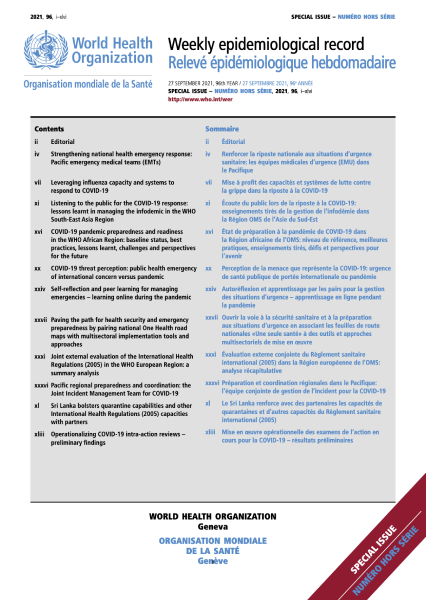The South-East Asia Region has a high burden of outbreaks and emerging and re-emerging diseases. Some recent outbreaks included those of avian influenza A (H5N1), A (H9N2), influenza A (H1N1)pdm09, Zika virus disease, Middle East respiratory syndrome coronavirus, Nipah virus disease and Crimean-Congo haemorrhagic fever. The International Health Regulations (2005) (IHR), which came into force on 15 June 2007 as an obligation
for WHO and States Parties, have been a valuable guide for national and international capacity-building, coordination and collaboration for global health security. Although the IHR describe what must be achieved by countries, it is not clear how countries should achieve
their core capacities. The WHO Regional Office for South-East Asia (SEARO) has worked with the WHO Regional Office for the Western Pacific to ensure resilient health systems to meet
the growing threat of emerging and infectious diseases. The Asia-Pacific Strategy for Emerging Diseases (APSED) has been used to achieve the core capacities required
for IHR implementation. It was revised in 2010, and its scope was extended further in 2015 in APSED III to cover all hazards. WHO, the Food and Agriculture Organization of the United Nations and the World Organisation for Animal Health (OIE) have institutionalized tripartite coordination at regional level to address zoonotic diseases emerging at the animal–human interface, and rabies, zoonotic influenza and antimicrobial resistance (AMR) have been identified as priorities for operationalization of “One Health” since 2010. Similarly, WHO and OIE have organized national workshops on bridging IHR and performance of veterinary services (PVS) in Bangladesh, Bhutan and Indonesia to improve intersectoral collaboration for zoonoses, food safety and AMR.
Area of work
Risk Analytics and Action Reviews (RAR)
EHS Theme
International Health Regulations capacity building for emergency preparedness
Published
May 24, 2019
Region
South-East Asia Region

